This is a continuation of a report on new ways to look at depth of field. The series starts here:
I’ve been derelict in publishing a summary of all my work of depth of field. I apologize. The reason is that I find it difficult to see the forest here, although I sure understand the trees. I’m just going to plunge in and see where it goes.
My first conclusion about DOF is that, with modern cameras and lenses, there just isn’t much of it. Consider these curves for our simulated 55mm f/1.4 lens with the same aberrations as the Otus 85 f/1.4 mounted on a simulated Sony a7RII and focused at infinity.
At f/1.4, we’re starting to see some degradation with the object of interest at about 800 m. At f/2.8. it’s more like 300m. If you’re more or less critical, these numbers could change. Even at f/11, it’s close to 50 meters. Yikes!
The way to take this chart and use it for other focal length lenses than 55 mm is to calculate the following number:
(f/55)^2
where f is the focal length in mm of the lens that you want to use.
With a 200mm f/2.8 lens, that’s as good as the Otus 55, the multiplier is 3.6. Thus the distance where you begin to lose subject sharpness with the lens focused at infinity is no longer 300m; it’s more like 1100m! With a 500 f/4, the multiplier is about 80, and we multiply the 55mm distance of about 200m by that to get — wait for it — 16 km! I guess it’s a good thing in — a perverse way — that 500mm lenses aren’t as sharp as Otus ones.
Another thing I’ve discovered is: because of lens aberrations, sometimes lenses used near wide open have more DOF that you’d think.
Take a look at this graph, for a 55 mm lens focused at 3 meters.
Let’s look a little closer:
Now you can see that, in terms of loss of peak sharpness, that f/1.4 and f/2.8 have about the same DOF.
The same is true of diffraction, in theory. It gives narrow apertures more DOF than you’d see without it. However, that’s a little harder to see on these graphs because the defocusing DOF is so great. I’ll turn off the diffraction simulation and run the immediately-above curve again:
Virtually no difference.
Note the tiny amount of DOF at the wide apertures of f/1.4 through f/2.8, Maybe 50 mm out of 3 meters! And 3 meters isn’t even particularly close for a 55 mm lens.
What if we get to intimate portrait distance, say 1 meter?
At the three widest f-stops, we’re talking about 5 mm or so of DOF!
This has implications for focusing, and for planning. Focus stacking doesn’t look so much like a corner-case solution. Too bad you can’t focus-stack a portrait.
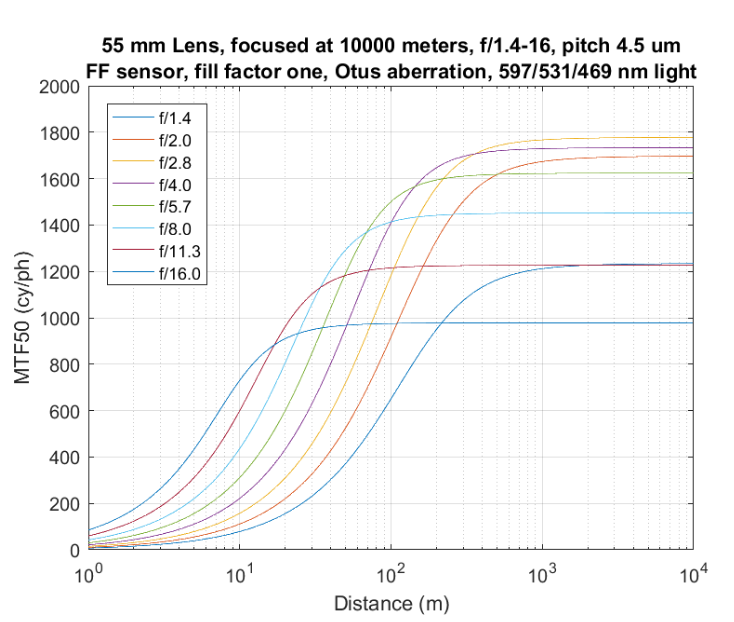
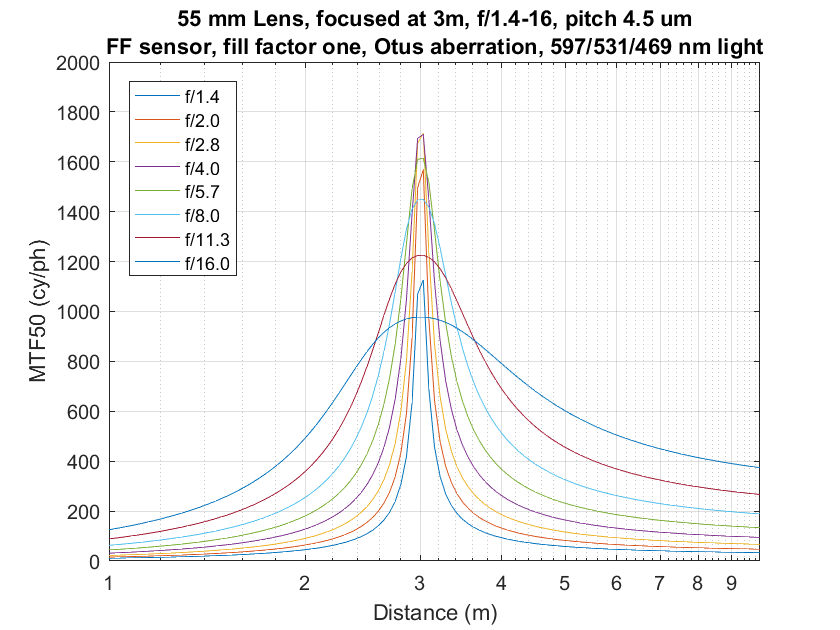
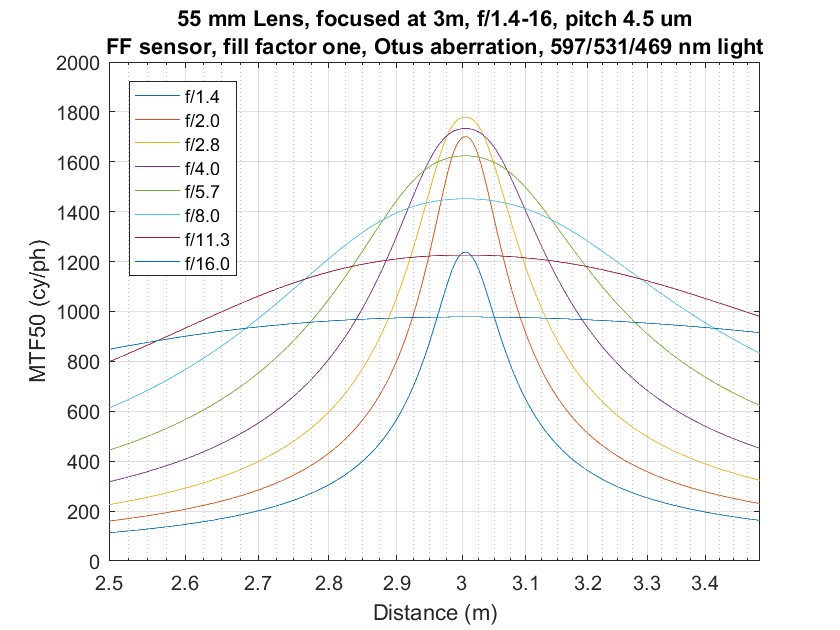
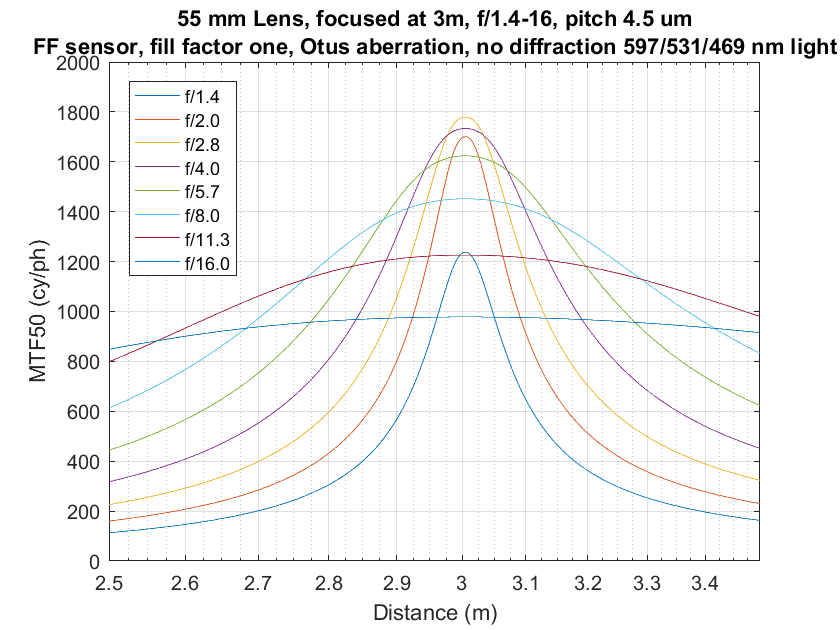
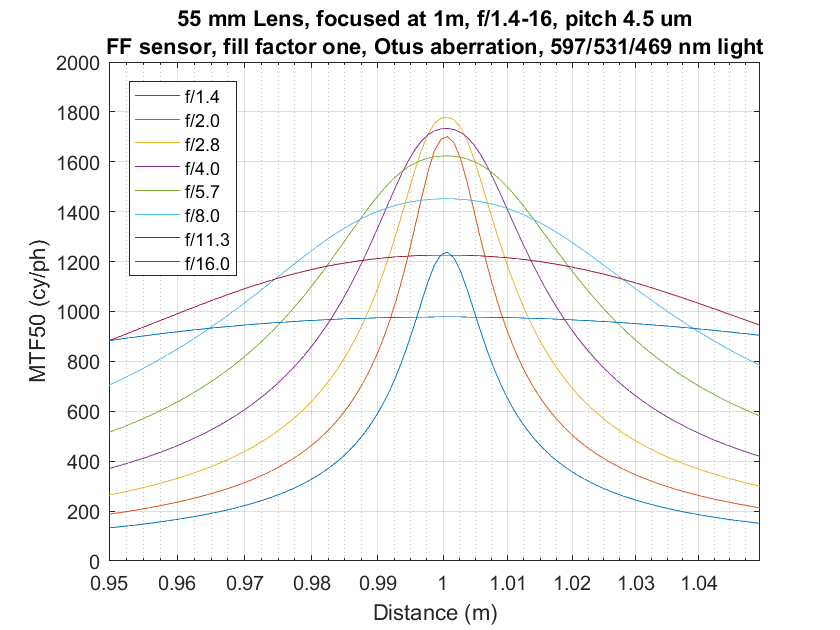
Leave a Reply